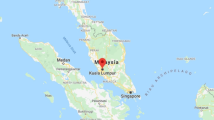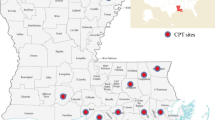Abstract
In civil engineering, the precise determination of pile bearing capacity holds paramount importance in ensuring foundations' safe and efficient design. The primary goal of this study is to develop innovative AI predictive models specifically tailored for the assessment of pile bearing capacity (PU). The fundamental predictive methodology adopted in this investigation is rooted in the Random Forest (RF) architecture. A unique hybrid technique has been applied to attain precise and optimal predictions, integrating the Giant Trevally Optimizer (GTO) and the Golden Eagle Optimizer (GEO). A dataset comprising 200 case histories derived from static load tests conducted on driven piles was utilized during the model construction and validation process. These datasets were employed throughout all stages of model development, including training, validation, and testing. The methodology applied in this study yielded precise results, emphasizing the efficacy of the proposed models. The incorporation of a hybridization technique into the RF model has resulted in dependable outcomes for predicting PU, thus significantly enhancing the performance of the traditional RF model. Optimizing the RF model with GTO optimizers produces reliable outcomes, substantiated by the R2 and RMSE values, which stand at 0.996 and 22.23, respectively.









Similar content being viewed by others
Data availability
The authors do not have permission to share data.
References
Akbarzadeh MR, Ghafourian H, Anvari A, Pourhanasa R, Nehdi ML (2023) Estimating compressive strength of concrete using neural electromagnetic field optimization. Materials (basel) 16(11):4200
Amjad M, Ahmad I, Ahmad M, Wróblewski P, Kamiński P, Amjad U (2022) Prediction of pile bearing capacity using XGBoost algorithm: modeling and performance evaluation. Appl Sci 12(4):2126
Bardhan A, Singh RK, Ghani S, Konstantakatos G, Asteris PG (2023) Modelling soil compaction parameters using an enhanced hybrid intelligence paradigm of ANFIS and improved grey wolf optimiser. Mathematics 11(14):3064
Benbouras MA, Petrişor A-I, Zedira H, Ghelani L, Lefilef L (2021) Forecasting the bearing capacity of the driven piles using advanced machine-learning techniques. Appl Sci 11(22):10908
Biau G (2012) Analysis of a random forests model. J Mach Learn Res 13(1):1063–1095
Biau G, Scornet E (2016) A random forest guided tour. TEST 25:197–227
Botchkarev A (2018) Performance metrics (error measures) in machine learning regression, forecasting and prognostics: properties and typology. Preprint. arXiv:1809.03006
Bozozuk M, Bozozuk M (1981) Bearing capacity of pile preloaded by downdrag. National Research Council Canada, Division of Building Research
Chen W, Sarir P, Bui X-N, Nguyen H, Tahir MM, Jahed Armaghani D (2020) Neuro-genetic, neuro-imperialism and genetic programing models in predicting ultimate bearing capacity of pile. Eng Comput 36:1101–1115
Coyle HM, Bartoskewitz RE, Berger WJ (1973) Bearing capacity prediction by wave equation analysis—state of the art
Denai MA, Palis F, Zeghbib A (2004) ANFIS based modelling and control of non-linear systems: a tutorial. In: 2004 IEEE international conference on systems, man and cybernetics (IEEE cat. no. 04CH37583). IEEE, pp 3433–3438
Ghani S, Kumari S (2022a) Consumption of industrial waste in sustainable development of clean and environmentally friendly city near an industrial area. Facet Smart City Comput Exp Tech Sustain Urban Dev 2022:103
Ghani S, Kumari S (2022b) Reliability analysis for liquefaction risk assessment for the city of Patna, India using hybrid computational modeling. J Geol Soc India 98(10):1395–1406
Ghani S, Kumari S (2023) Prediction of soil liquefaction for railway embankment resting on fine soil deposits using enhanced machine learning techniques. J Earth Syst Sci 132(3):145
Ghani S, Kumari S, Jaiswal S, Sawant VA (2022) Comparative and parametric study of AI-based models for risk assessment against soil liquefaction for high-intensity earthquakes. Arab J Geosci 15(14):1262
Ghani S, Kumari S, Choudhary AK (2023) Geocell mattress reinforcement for bottom ash: a comprehensive study of load-settlement characteristics. Iran J Sci Technol Trans Civ Eng 2023:1–17
Goble GG, Likins Jr G, Rausche F (1975) Bearing capacity of piles from dynamic measurements (No. OHIO-DOT-05-75 Final Rpt.)
Harandizadeh H, Toufigh V (2020) Application of developed new artificial intelligence approaches in civil engineering for ultimate pile bearing capacity prediction in soil based on experimental datasets. Iran J Sci Technol Trans Civ Eng 44(Suppl 1):545–559
Harandizadeh H, Jahed-Armaghani D, Khari M (2021) A new development of ANFIS–GMDH optimized by PSO to predict pile bearing capacity based on experimental datasets. Eng Comput 37:685–700
Karballaeezadeh N, Mohammadzadeh DS, Moazemi D, Band SS, Mosavi A, Reuter U (2020) Smart structural health monitoring of flexible pavements using machine learning methods. Coatings 10(11):1100
Karballaeezadeh N, Ghasemzadeh Tehrani H, Mohammadzadeh Shadmehri D, Shamshirband S (2020) Estimation of flexible pavement structural capacity using machine learning techniques. Front Struct Civ Eng 14:1083–1096
Khanmohammadi M, Armaghani DJ, Sabri-Sabri MM (2022) Prediction and optimization of pile bearing capacity considering effects of time. Mathematics 10(19):3563
Kulkarni AD, Lowe B (2016) Random forest algorithm for land cover classification. Pattern Recogn Lett 27(4):294–300
Lee I-M, Lee J-H (1996) Prediction of pile bearing capacity using artificial neural networks. Comput Geotech 18(3):189–200
Lin W, Wu Z, Lin L, Wen A, Li J (2017) An ensemble random forest algorithm for insurance big data analysis. IEEE Access 5:16568–16575
Liu Y, Wang Y, Zhang J (2012) New machine learning algorithm: random forest. In: Information computing and applications: third international conference, ICICA 2012, Chengde, China, September 14–16, 2012. Proceedings 3. Springer, pp 246–252
Maizir H, Kassim KA (2013) Neural network application in prediction of axial bearing capacity of driven piles. In: Proceedings of the international multiconference of engineers and computer scientists, pp 13–15
Masoumi F, Najjar-Ghabel S, Safarzadeh A, Sadaghat B (2020) Automatic calibration of the groundwater simulation model with high parameter dimensionality using sequential uncertainty fitting approach. Water Supply 20(8):3487–3501. https://doi.org/10.2166/ws.2020.241
Meyerhof GG (1976) Bearing capacity and settlement of pile foundations. J Geotech Eng Div 102(3):197–228
Milad F, Kamal T, Nader H, Erman OE (2015) New method for predicting the ultimate bearing capacity of driven piles by using Flap number. KSCE J Civ Eng 19:611–620
Mitchell TM (2007) Machine learning, vol 1. McGraw-Hill, New York
Momeni E, Nazir R, Armaghani DJ, Maizir H (2014) Prediction of pile bearing capacity using a hybrid genetic algorithm-based ANN. Measurement 57:122–131
Momeni E, Dowlatshahi MB, Omidinasab F, Maizir H, Armaghani DJ (2020) Gaussian process regression technique to estimate the pile bearing capacity. Arab J Sci Eng 45:8255–8267
Murlidhar BR, Sinha RK, Mohamad ET, Sonkar R, Khorami M (2020) The effects of particle swarm optimisation and genetic algorithm on ANN results in predicting pile bearing capacity. Int J Hydromechat 3(1):69–87
Paik K, Salgado R (2003) Determination of bearing capacity of open-ended piles in sand. J Geotech Geoenvironmental Eng 129(1):46–57
Pal M, Deswal S (2008) Modeling pile capacity using support vector machines and generalized regression neural network. J Geotech Geoenvironmental Eng 134(7):1021–1024
Pham TA, Vu H-LT (2021) Application of ensemble learning using weight voting protocol in the prediction of pile bearing capacity. Math Probl Eng 2021:1–14
Pham TA, Ly H-B, Tran VQ, Van Giap L, Vu H-LT, Duong H-AT (2020) Prediction of pile axial bearing capacity using artificial neural network and random forest. Appl Sci 10(5):1871
Sarica A, Cerasa A, Quattrone A (2017) Random forest algorithm for the classification of neuroimaging data in Alzheimer’s disease: a systematic review. Front Aging Neurosci 9:329
Shaik S, Krishna KSR, Abbas M, Ahmed M, Mavaluru D (2019) Applying several soft computing techniques for prediction of bearing capacity of driven piles. Eng Comput 35:1463–1474
Singh A, Thakur N, Sharma A (2016) A review of supervised machine learning algorithms. In: 2016 3rd international conference on computing for sustainable global development (INDIACom). IEEE, pp 1310–1315
Teh CI, Wong KS, Goh ATC, Jaritngam S (1997) Prediction of pile capacity using neural networks. J Comput Civ Eng 11(2):129–138
Thapa I, Ghani S (2023) Estimation of California bearing ratio for hill highways using advanced hybrid artificial neural network algorithms. Multiscale Multidiscip Model Exp Des 2023:1–26
Author information
Authors and Affiliations
Contributions
Fan Liu: Methodology, Formal analysis, Software, Validation. Xiongzhi Peng: Writing—Original draft preparation, Conceptualization, Supervision, Project administration. Kun Li: Formal analysis, Validation, Methodology, Language review. Fuzhong Yang: Methodology, Formal analysis, Software, Validation. Pingyu Su: Formal analysis, Validation, Methodology, Language review.
Corresponding author
Ethics declarations
Conflict of interest
The authors declare no conflict of interest.
Additional information
Publisher's Note
Springer Nature remains neutral with regard to jurisdictional claims in published maps and institutional affiliations.
Rights and permissions
Springer Nature or its licensor (e.g. a society or other partner) holds exclusive rights to this article under a publishing agreement with the author(s) or other rightsholder(s); author self-archiving of the accepted manuscript version of this article is solely governed by the terms of such publishing agreement and applicable law.
About this article
Cite this article
Liu, F., Peng, X., Su, P. et al. Enhancing pile bearing capacity estimation through random forest-based hybridization approach. Multiscale and Multidiscip. Model. Exp. and Des. (2024). https://doi.org/10.1007/s41939-024-00426-2
Received:
Accepted:
Published:
DOI: https://doi.org/10.1007/s41939-024-00426-2




